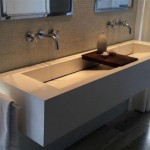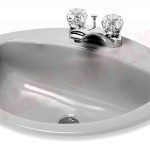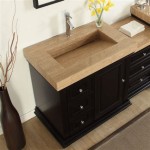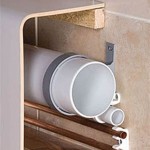Rustic Log Cabin Bathroom Vanity Unit: A Comprehensive Guide
The rustic log cabin bathroom vanity unit is a design element that brings the charm and ruggedness of the outdoors into the interior space of a bathroom. It's more than just a functional piece of furniture; it’s a statement that reflects a specific aesthetic and lifestyle. This article will explore the key aspects of rustic log cabin bathroom vanity units, encompassing their design considerations, material options, installation processes, maintenance procedures, and aesthetic integration within a broader bathroom design scheme.
Design Considerations for Rustic Log Cabin Vanities
The design of a rustic log cabin vanity unit is pivotal to its overall functionality and aesthetic appeal. Thoughtful consideration should be given to the available space, the intended use, and the existing bathroom décor. Key design considerations include size, configuration, storage capacity, sink type, and countertop material.
Size and Configuration: The dimensions of the vanity must be appropriate for the bathroom's layout. Smaller bathrooms may necessitate a compact, wall-mounted vanity to maximize floor space. Larger bathrooms, conversely, can accommodate double vanities or larger, freestanding units. The configuration, whether it's a single sink or double sink setup, should align with the needs of the occupants. The placement of plumbing and electrical outlets also influences the configuration and should be accounted for during the design phase.
Storage Capacity: A well-designed vanity unit will offer ample storage space for toiletries, towels, and other bathroom essentials. Drawers, cabinets, and open shelving can be incorporated to optimize storage. The internal organization of drawers and cabinets should be designed to accommodate specific items, such as toiletries, cleaning supplies, or medications. The depth and height of shelves should be carefully considered to maximize usable space.
Sink Type: The choice of sink type dramatically impacts the vanity's overall appearance and functionality. Options include undermount sinks, vessel sinks, drop-in sinks, and farmhouse sinks. Undermount sinks create a seamless transition from the countertop to the sink, while vessel sinks sit atop the counter, creating a focal point. Drop-in sinks are installed within a pre-cut hole in the countertop, and farmhouse sinks are characterized by their exposed front apron. Each sink type requires different installation techniques and countertop preparations.
Countertop Material: The countertop material should complement the rustic aesthetic while providing durability and resistance to moisture. Popular choices include granite, marble, quartz, wood (sealed), and concrete. Granite and quartz offer excellent durability and are resistant to stains and scratches. Marble provides a luxurious look but requires more maintenance. Wood countertops offer a natural, warm aesthetic but must be properly sealed to prevent water damage. Concrete countertops can be customized with various textures and colors, providing a unique and industrial-rustic feel.
Material Options for Rustic Log Cabin Vanities
The selection of materials is crucial in achieving the desired rustic aesthetic and ensuring the longevity of the vanity unit. The primary material is typically wood, but the type of wood and its finish significantly impact the overall look and feel. Hardware choices, such as knobs and pulls, also play a crucial role in complementing the rustic design.
Wood Types: Common wood choices for rustic log cabin vanities include pine, cedar, oak, hickory, and reclaimed wood. Pine is a readily available and affordable option, offering a natural, knotty appearance. Cedar is naturally resistant to moisture and insects, making it a suitable choice for bathroom environments. Oak is a durable and strong wood with a distinctive grain pattern. Hickory is a dense and hard wood, known for its durability and unique color variations. Reclaimed wood offers a unique character and eco-friendly appeal, often featuring salvaged wood from old barns or buildings. Each wood type has distinct characteristics in terms of color, grain, and durability.
Finishes: The finish applied to the wood significantly influences its appearance and protection. Common finishes include stains, varnishes, and paints. Stains enhance the natural grain of the wood while adding color. Varnishes provide a protective layer that resists moisture and scratches. Paints offer a wider range of color options and can be used to create a distressed or weathered look. The choice of finish should be based on the desired aesthetic and the level of protection required.
Hardware: The hardware, including knobs, pulls, and hinges, should complement the rustic aesthetic. Options include wrought iron, bronze, copper, and oil-rubbed bronze. Wrought iron hardware provides a strong and rugged look. Bronze and copper hardware offer a warm, aged appearance. Oil-rubbed bronze hardware provides a dark, matte finish that complements a rustic design. The size and style of the hardware should be proportional to the size of the vanity and its design.
Countertop Material Considerations: As mentioned earlier, countertop materials have a significant aesthetic and functional impact. Selecting the right material, like granite, with its natural variations, reinforces the rustic feel. The choice should also consider ease of cleaning, resistance to mold and mildew, and the overall cost.
Installation and Maintenance of Rustic Log Cabin Vanities
Proper installation is essential for the functionality and longevity of a rustic log cabin vanity unit. Improper installation can lead to water damage, structural issues, and aesthetic flaws. Regular maintenance is also necessary to preserve the vanity's appearance and prevent damage.
Installation Process: The installation process typically involves removing the old vanity (if applicable), preparing the plumbing and electrical connections, installing the new vanity unit, connecting the sink and faucet, and sealing any gaps or seams. It's crucial to ensure that the vanity is level and securely attached to the wall or floor. Plumbing connections should be leak-tested to prevent water damage. Electrical connections should be made by a qualified electrician to ensure safety. The installation process may vary depending on the type of vanity and the existing bathroom infrastructure. For those unfamiliar with plumbing or electrical work, professional installation is highly recommended.
Sealing and Waterproofing: Proper sealing and waterproofing are essential to prevent water damage to the wood components of the vanity. All exposed wood surfaces should be sealed with a water-resistant sealant, such as polyurethane or varnish. Silicone caulk should be applied to all seams and gaps to prevent water from penetrating behind the vanity or under the countertop. Regular inspection and re-sealing may be necessary to maintain the vanity's water resistance.
Cleaning and Maintenance: Regular cleaning is necessary to preserve the vanity's appearance and prevent the build-up of dirt, grime, and mold. Use a mild soap and water solution to clean the vanity's surfaces. Avoid using harsh chemicals or abrasive cleaners, which can damage the finish. Wipe up spills promptly to prevent staining. Periodically inspect the vanity for signs of water damage, such as warping, discoloration, or mold growth. Address any issues promptly to prevent further damage. The type of countertop material will dictate specific cleaning requirements; for example, marble requires pH-neutral cleaners to prevent etching.
Preventative Measures: Implementing preventative measures can extend the lifespan of a rustic log cabin vanity unit. Using a bathroom fan during showers and baths can help reduce humidity levels, minimizing the risk of water damage. Placing mats or rugs in front of the vanity can help protect the floor from water spills. Avoiding placing hot items directly on the countertop can prevent heat damage. Regularly inspecting and tightening hardware can prevent loose knobs and pulls.
In summary, a rustic log cabin bathroom vanity unit is a significant investment. Thoughtful planning, careful installation, and diligent maintenance are all essential to maximizing its functionality and aesthetic value. The selection of appropriate materials, considering the space and the overall design of the bathroom, contributes significantly to the success of the project. By following these guidelines, one can ensure a beautiful and long-lasting addition to the bathroom.

26 Impressive Ideas Of Rustic Bathroom Vanity Home Design Lover Bathrooms Cabin Decor Vanities

30 Rustic Bathroom Vanity Ideas That Are On Another Level Vanities Log Home Cabin

31 Impressive Diy Rustic Farmhouse Bathroom Vanity Ideas Log Home Bathrooms Vanities

Gallery Town Country Cedar Homes Rustic Bathroom Designs Bathrooms Cabin

Pin On Bathroom

Pin On Home Decor

Buy Tree Trunk Log Home Rustic Bathroom Vessel Sink In

Cedar Lake Cabin 48 72 Rustic Log Vanity

Vanity Sink Designs For Your Bathroom Designcafe

21 Rustic Bathroom Ideas For That Perfect Farmhouse Look Cabin Bathrooms Log
Related Posts







